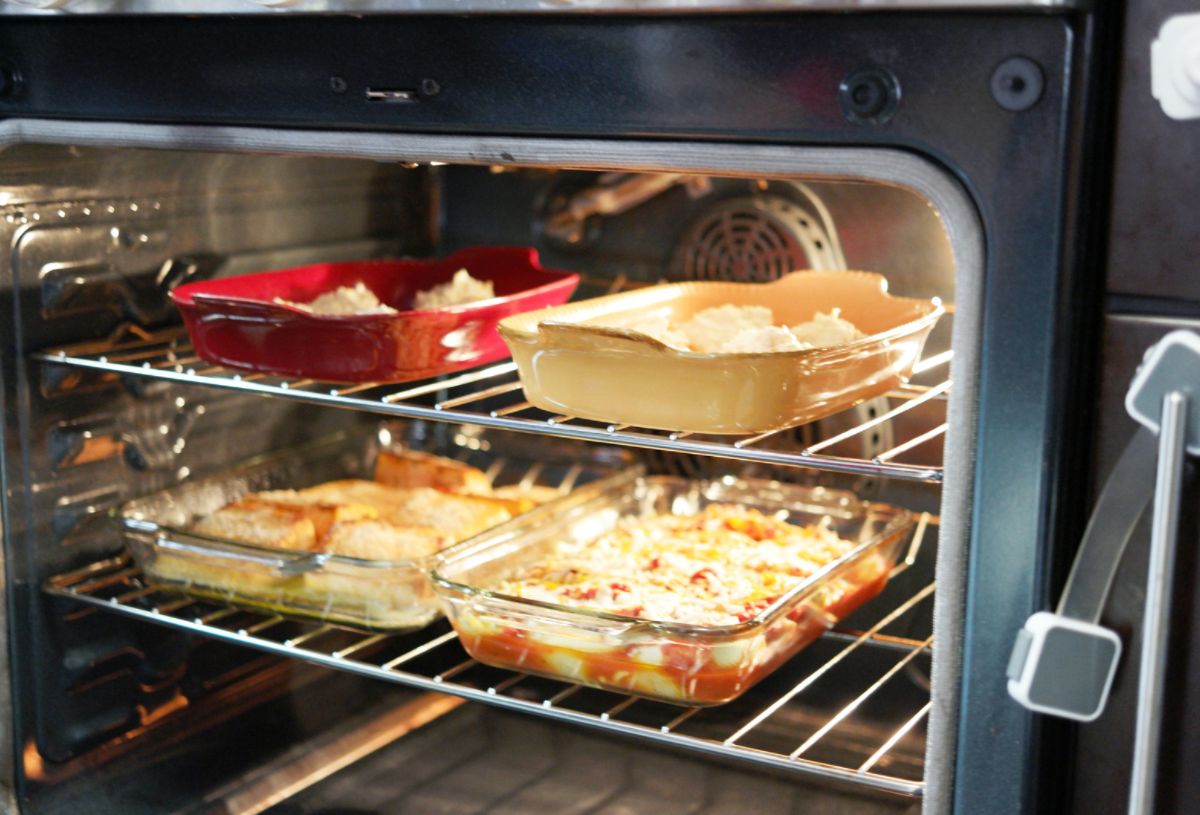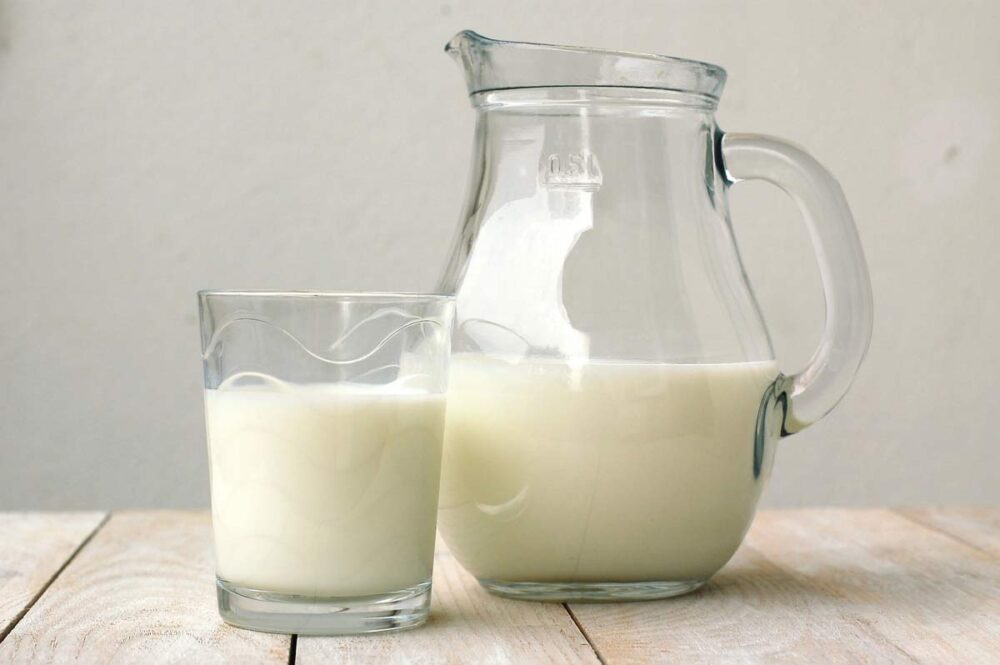It’s important to understand the type of glass you’re preparing to use in the oven and find out whether it is oven safe, and to what degree the manufacturer suggests it can withstand.
Whether or not you can put glass in the oven depends on the oven and the type of glass. If the oven is a standard electric oven, then it’s unlikely that your glass will break. However, if you’re using the broil setting, it’s possible your glass could get too hot and shatter. You also want to be sure you only use oven-safe glass in the oven.
» You might be interested in How Much Rice to Serve Per Person and the Best Temperature for Keeping Food Warm in the Oven.

How Much Heat Can a Glass Pan Take?
Most glass that is oven safe can withstand temperatures up to 600° Fahrenheit, so it is safe to use it in the oven as long as you keep the heat lower than that. As you probably already know, most food will be cooked at 450° F or less in the oven, so it’s unlikely you’d ever reach the point where your glassware would melt or soften.
Pyrex, which is one of the top glassware brands, is made to withstand any temperature in the oven. They claim you can use it up to any heat you might be cooking at in the oven. This is likely true, because it’s not possible to exceed 600° F in most home ovens.
Other glassware might not be able to withstand that type of heat, though. You need to check the specifications on the cookware first. For example, if you’re using a glass that is oven safe to 350° F, you wouldn’t want to use it for anything where your oven is getting above 325°, to account for possible fluctuations in your oven’s temperature.

What Can Cause Glass to Break in the Oven?
While you can safely cook in most glass dishes in the oven, you should be aware that there are some situations that will cause even your oven-safe glass to break in the oven.
1. Drastic temperature change
One of the most common causes of oven-safe glass breaking is from a sudden fluctuation in the temperature of the glass. For instance, if you take a glass dish from the refrigerator or freezer and place it immediately into a hot oven, the change in temperature can cause it to shatter.
2. Using too high of heat
Even if you’re using a glass dish that is labeled oven safe, it might not be able to withstand a really high temperature. If the glass is made to withstand 350 degrees and you use it in a 450 degree oven, the high heat can cause the glass to warp or bend, causing it to break.
3. Non oven-safe glass
Not all glass is created the same. There is tempered and non-tempered glass. Tempered glass is made to withstand high heat, is labeled oven safe, and can be used for cooking in the oven, and even in the Instant Pot and air fryer. Non-tempered glass, like a dinner plate or a mug, is not meant to be used in the oven. It can form cracks and shatter if heated too high.
In general, if you have any concerns about whether your glassware is safe to use in the oven, be sure to check the Manufacturer’s instructions.

Can I Put a Glass Plate in the Oven?
If the plate is oven safe, you can place it in a preheated oven at 300° F. People often put their plates in the oven to heat them up prior to serving food on them, to keep the food warmer longer. However, be sure you don’t exceed the temperature set out by the manufacturer.
There are many plates that are not oven safe. They will likely say this right on the bottom of the plate, so just turn it over to check. If it doesn’t say, it’s probably best not to use it in the oven.
Even plates that say “Not oven safe,” can be placed in the oven to be warmed up, but only do so on a very low temperature setting, like 200° F, and be sure to watch it closely and remove it as soon as it warms up.

How to Keep Glass From Breaking in the Oven
There are a few things you can do to help prevent your glassware from breaking in the oven.
- Use only oven-safe glass. Check the bottom of the dish to see if it’s oven safe.
- If the temperature limit of your oven-safe glassware is unknown, check the manufacturer’s website or pamphlet to find out.
- Bring your dish up to room temperature before putting it in the oven to avoid sudden temperature changes. If there is a casserole in the dish that’s frozen, allow it to dethaw in the refrigerator overnight, then come up to room temperature before cooking.
- Preheat the oven to the correct temperature before placing your dish in it.
- Avoid stacking dishes on top of each other in the oven.
Can You Put a Frozen Pyrex Dish in the Oven?
It is considered safe to transfer a Pyrex dish directly from the refrigerator or freezer into a hot oven, provided it has been properly preheated. However, when a Pyrex bowl is heated or cooled rapidly, different parts of the bowl expand or contract by different amounts, causing stress. If the stress is too extreme, the bowl’s structure will fail, causing a spectacular shattering effect.
If you want to be sure that your glassware doesn’t explode or break in the oven, you should always allow it to come up to room temperature before putting it into the oven.

Other Tips for Preventing Glassware From Breaking
- Allow hot glassware to cool on a cooling rack, potholder, or dry cloth (not on a wet or cool surface).
- Be sure to allow hot glassware to cool before washing, refrigerating, or freezing.
- Don’t place cold glassware on a hot surface, such as the stovetop.
- Don’t place hot glassware in the refrigerator or freezer; allow it to cool first.
YOU MIGHT ALSO LIKE
Like it, Love it, Want Some More of It? Subscribe to our YouTube channel to watch us cook and follow us on Pinterest, Instagram and Facebook. We really love it when you save our recipes to Pinterest 😊
Pin this to look back on later!

Laura is a home cook, with 25 years experience behind the stove, who spends an extraordinary amount of time in the kitchen cooking. She loves making new recipes and finding wonderful new things to eat, both at home or abroad. She spends a lot of time researching, crafting, and perfecting her recipes.




